When I first encountered Philadelphia-based artist Shona McAndrew’s sculptures, I was immediately transfixed by the look the sculpted women were giving me. Made from paper maché, McAndrew’s lifesize sculptures are more than that, they are presences within an exhibition space. They are both art viewers and works of art. But they’re also renderings of the small instances of daily life we often take for granted. Norah lounges in a chair her hand halfway down her underwear. Sofia is sprawled out on the floor waxing her legs. Belinda relaxes, suspended by a buoy. Elizabeth closes her eyes as she soaks in a bathtub. Centered around representing plus-size bodies, McAndrew’s ladies are meticulously crafted explorations of body positivity, sexual liberation, and, ultimately, individuals that you’re going to want to get to know and spend time with.
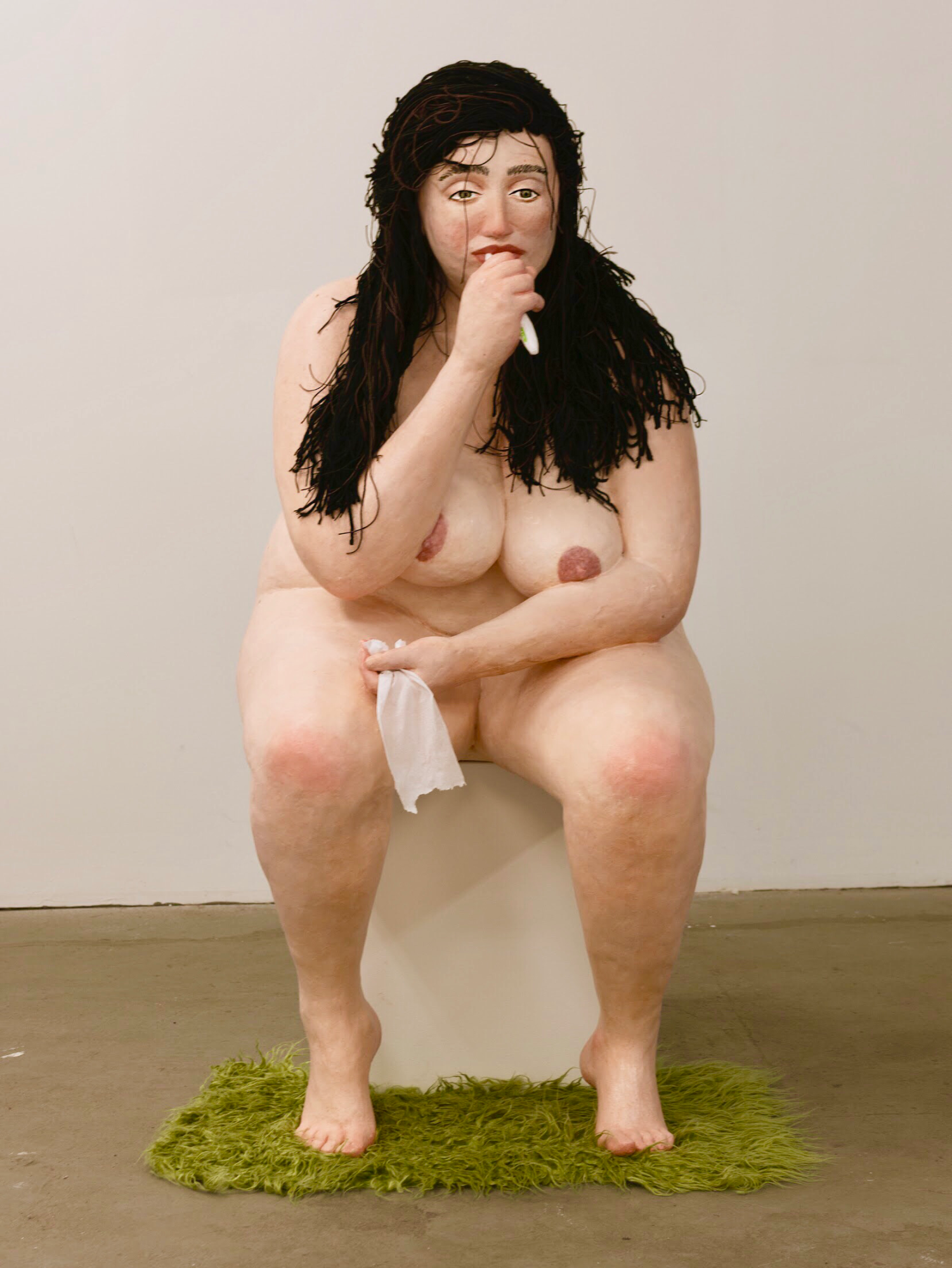
I discovered your sculptural work at SPRING/BREAK in 2017. But you started off with drawing as a medium of choice. Why is that?
Drawing was always what I did just for me. It was an easy, accessible way for me to engage with and process the world around me. All I needed was a pencil and paper. I grew up in Paris and always felt like an outsider. My mom is Scottish and my dad is American, so I never really felt French, Scottish or American. I was also a chubby kid. I don’t know if you know this, but there aren’t too many of us in Paris. As my dad likes to say, he knew I was his child because I was twice as big as every other newborn at the hospital. Growing up, I was very shy and spent a lot of time alone, drawing girls and dressing them up. I’ve consistently only ever drawn women. Looking back, it was like I was studying and cataloguing all the different ways one could be a woman.
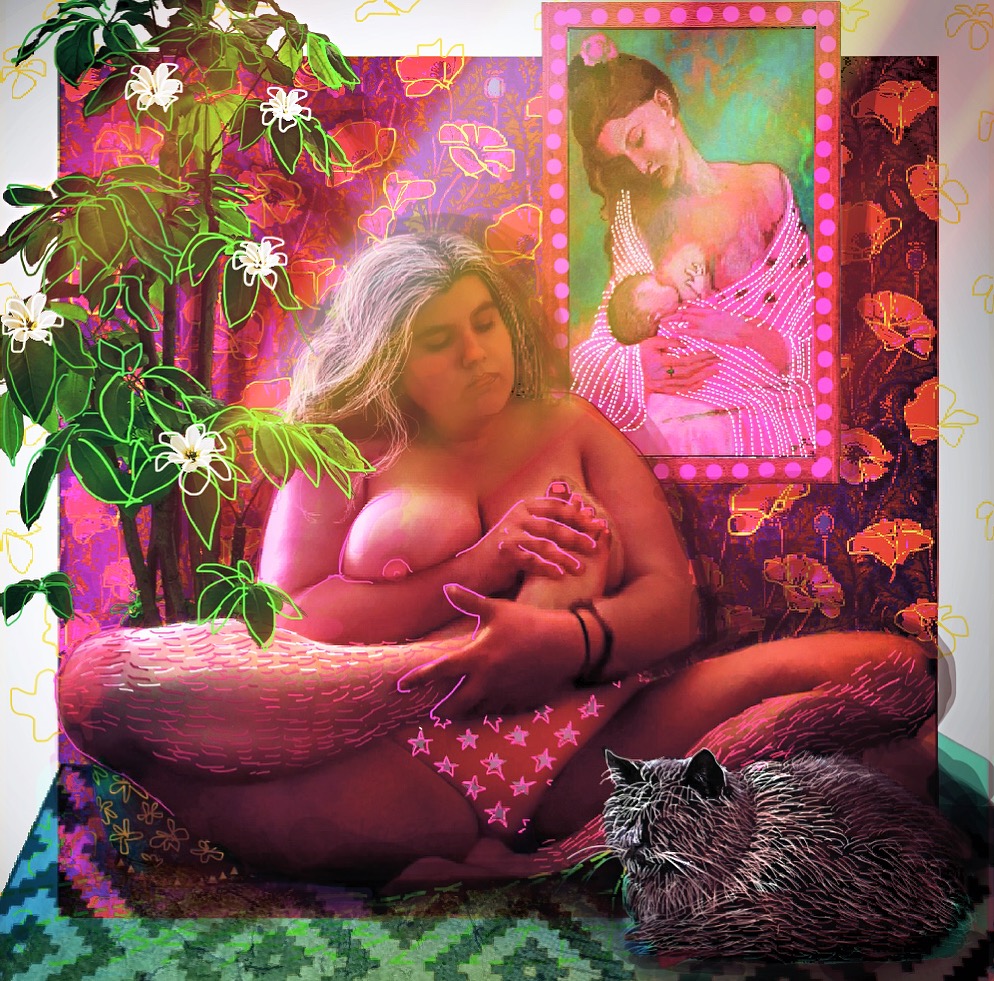
When did you decide to move into sculpture? Was that a way for you to understand femininity in real space?
My transition to sculpture began during my first year of grad school. I wanted to do something ambitious and felt very stuck in my paintings. I had just finished a large scale painting of a group of women lounging outdoors in a pastoral setting. It felt so rigid. I wanted to give the paintings some life, but didn’t feel able to do so in two dimensions. I wanted to experience what these bodies felt like in real space. I have body dysmorphia, so it’s very hard for me to understand how my body fits into the world. At times, I feel very disconnected from it and would often isolate myself in my internal struggle with self image.
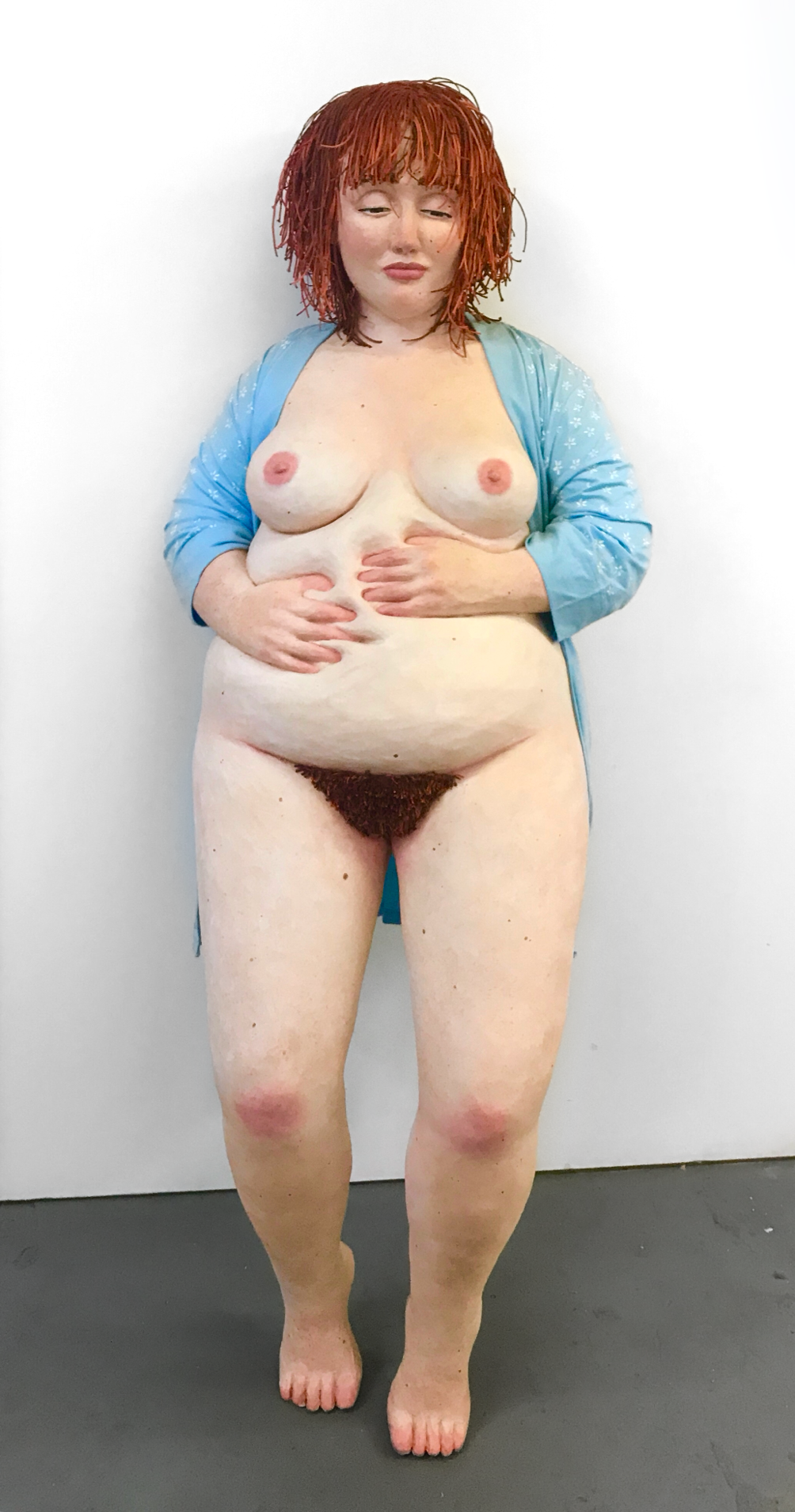
When I first saw your work, the sculptures really felt like the presences. Not just in the space but in your life. You name them. What’s the naming process? What goes into understanding them as people?
I feel very deeply connected to my sculptures. In my mind, once they get painted, they immediately become people. I don’t or can’t name them until I paint their faces and start figuring out their personalities. A lot of my ladies’ names are from women in my life, someone who gives me a warm feeling when I think of them. At times, even poses or sculptures themselves have been inspired by someone I know.

The environment the sculptures exist in feels closely connected to daily life. As a result, you’re not trying to understand them as much as you’re interested in getting to know them.
You know how when you’re a kid and you see a teacher outside of school, and it completely freaks you out because teachers only belong in school? Like, what the hell are they doing in a supermarket? That’s kind of how my body dysmorphia makes me experience everything and everyone. I couldn’t imagine how anyone else could experience life behind closed doors like I did. For example, finding your first hair in the wrong place. My interest in these common but hidden moments is partly my way of saying, “now I know we all do it.”
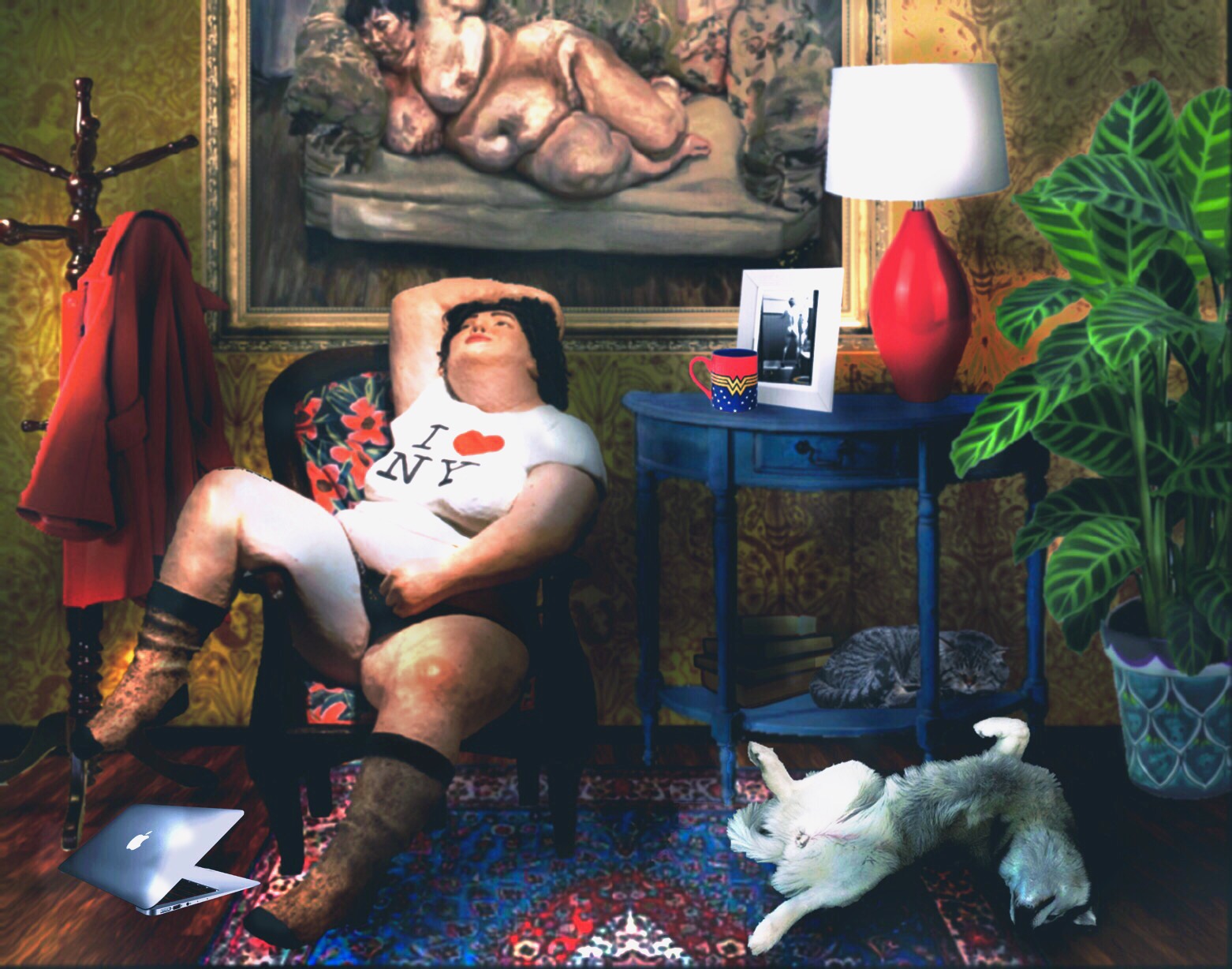
What role does eroticism play in your work?
Having a tabooed body probably made me to want to be a woman who comfortably discusses her sexuality. Because I’m a plus-size woman, some people may have extra biases and especially not want to address or confront my sexuality. They don’t want to think about it, don’t want to picture it, and immediately get uncomfortable when it comes up. I enjoy turning that back around on people, allowing them to confront their discomfort and the underlying reasons why they are uncomfortable with in the first place. I think a lot of my subject matter is about sensuality over sexuality. My goal is never to be pornographic or shocking just for the sake of shocking the viewer. However, much of my subject matter is not talked about so it ends up feeling shocking to some people.
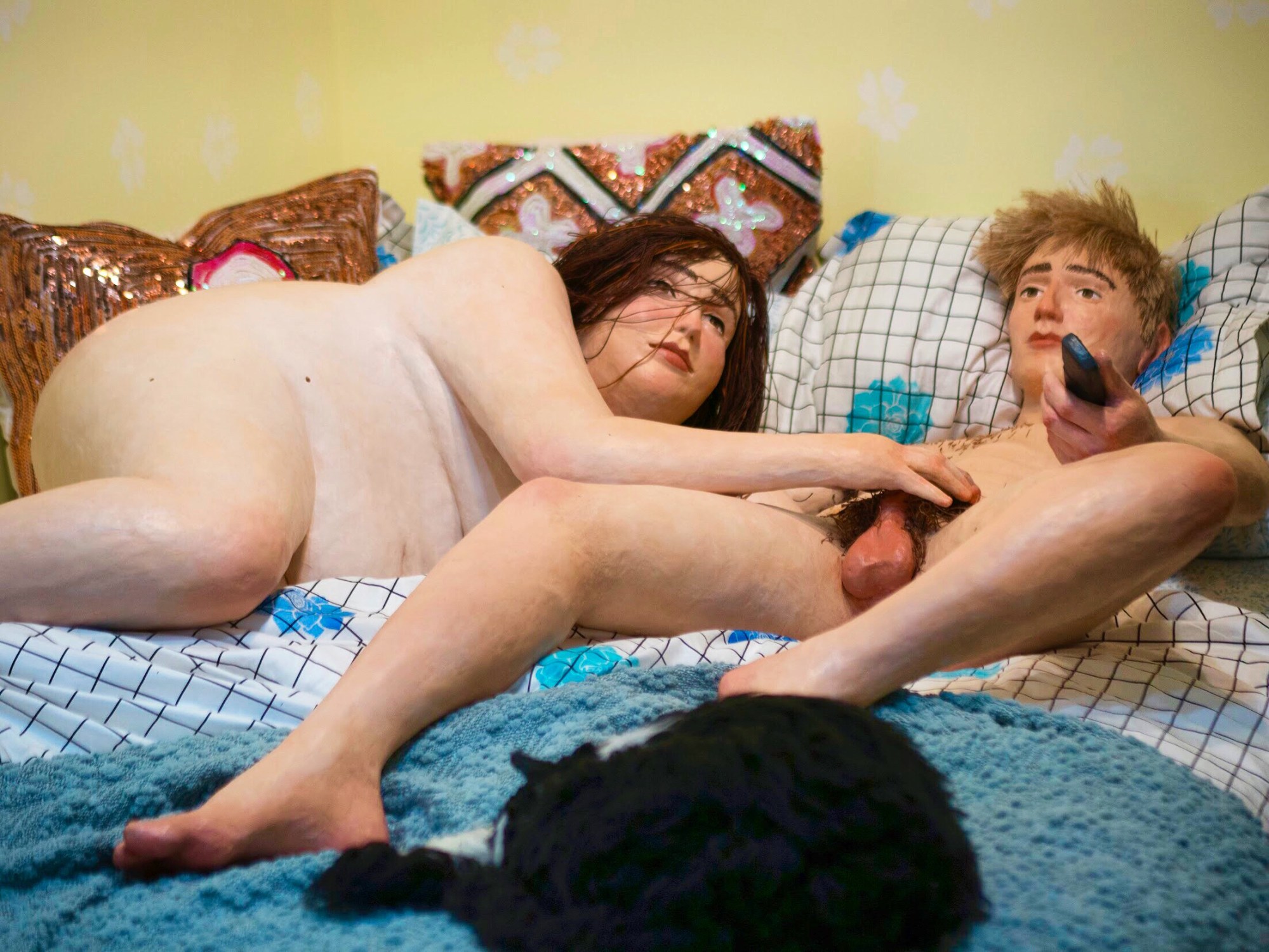
What are you working on currently?
After making so many life-size sculptures, I’m ready to bring back painting into my practice. I have been making digital collages of myself and my sculptures this past year, and now I have a pool of 30 or so images I want to see realized in painting. It’s the first time in a long time that I’ve felt this way. I’m very curious what the paintings will end up looking like. I have also been making smaller ladies, sculptures that feel just as much as individuals as the larger ones, but that fit nicely in my arms. I would love to make an army of them. I have shows in the works so hopefully they are ready to charge by then!
